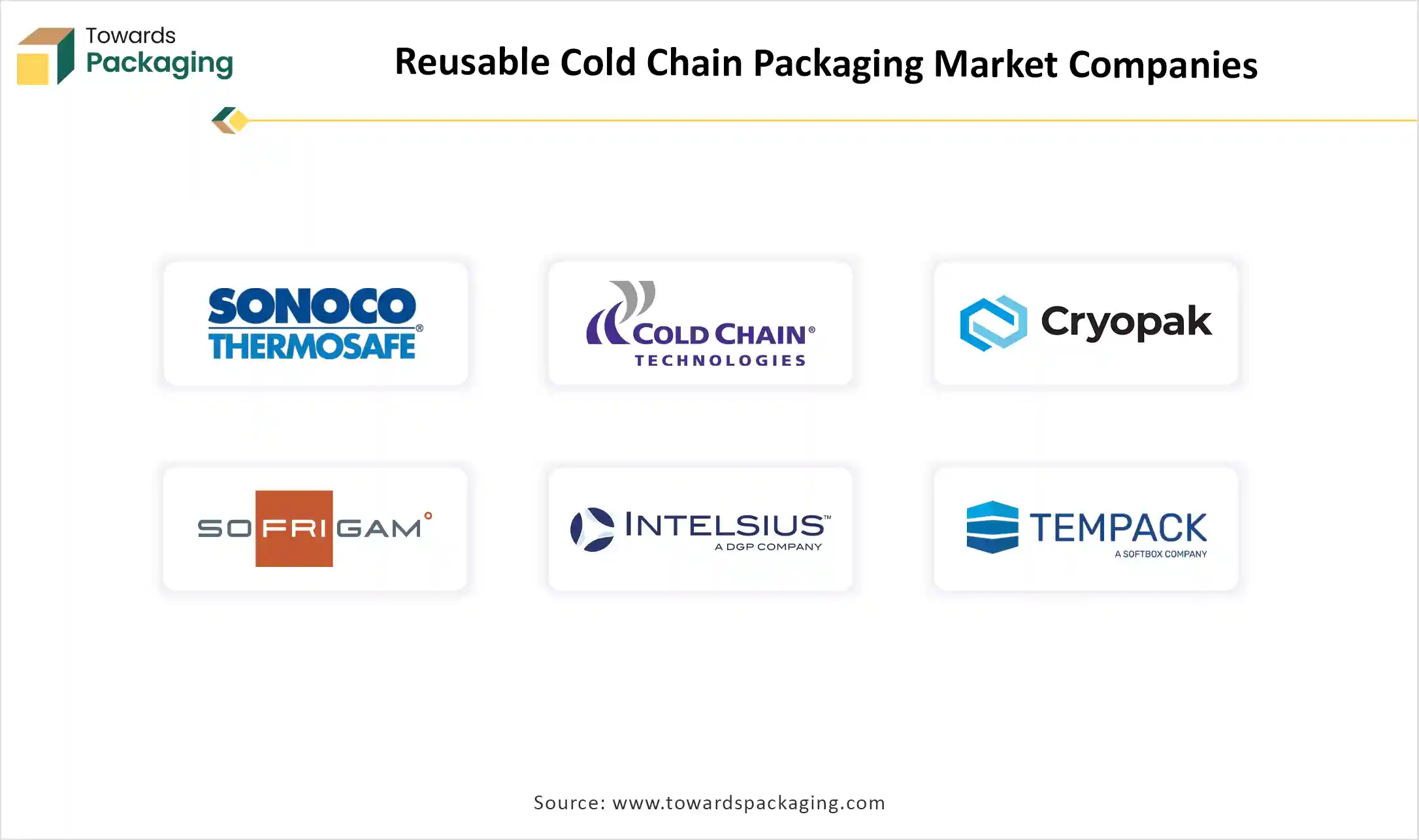The global reusable cold chain packaging market will grow from USD 4.97 billion in 2025 to USD 9.13 billion by 2034, at a CAGR of 6.98%. This growth comes from rising demand for sustainability, more shipments of pharmaceuticals and biologics, and the need for reliable temperature-controlled logistics in food and beverage e-commerce. Companies are using reusable packaging to cut waste, lower long-term costs, and follow healthcare regulations. New technologies like IoT tracking, vacuum-insulated panels, and phase change materials improve performance and visibility. North America and Europe lead adoption with strong infrastructure, while Asia-Pacific is growing quickly. Although high upfront costs and complex reverse logistics remain challenges, innovation and circular economy initiatives create strong opportunities for growth.
Top Reusable Cold Chain Packaging Market Players

- Sonoco ThermoSafe
- Cold Chain Technologies
- Pelican BioThermal
- Cryopak
- Sofrigam
- Intelsius
- Tempack
- Envirotainer
- Nordic Cold Chain Solutions
- Ember Technologies (Reusable IoT-Enabled Solutions)
Latest Announcements by Industry Leaders
- Marlena Hardy, DS Smith, Innovation Product Manager, stated that Tailor Temp packaging solution shows how adaptable and dependable fiber-based materials can be not only to keep cold chain logistics temperatures stable, but also to deliver a recyclable result for clients looking to fulfill sustainability goals.
New Advancements in the Market
- In April 2025, Cold Chain Technologies (CCT) revealed the introduction of a reusable universal temperature-controlled pallet shipper, the business's initial life sciences innovation since Tower Cold Chain, a reusable pallet specialist, was acquired in 2024. With a 1600L capacity and a design that accepts pallets from the US and Europe, the CCT Tower Elite offers 3PLs, airlines, and pharmaceutical companies a single solution to transport heavy loads around the world.
- In July 2025, Nordic Cold Chain Solutions is one of the top suppliers of packaging with temperature control and cold chain remedies, declares the Nordic Express Pack's debut, the first specifically cold chain packaging solution created and evaluated for GLP-1 drugs. GLP-1 medications need a specific temperature. Control during the shipping process to guarantee therapeutic effectiveness and uphold regulatory conformity.
Keypoints
- Company Overview
- Locations Subsidiaries/Geographic reach
- Key Executives
- Company Financials
- Patents registered
- SWOT Analysis
- Applications Catered
- Strategic collaborations
- Recent Developments
- Competitive Benchmarking
